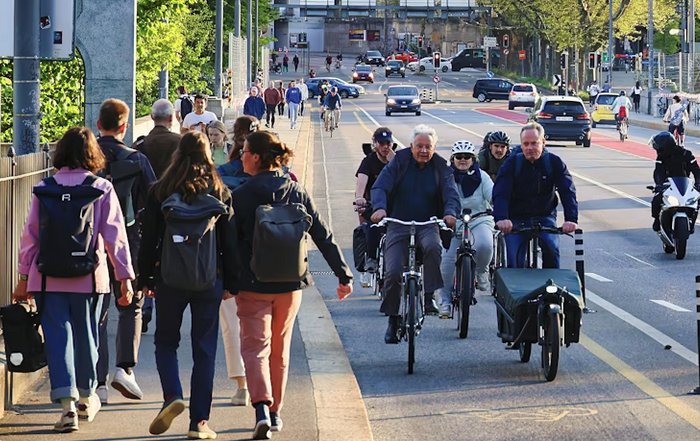Understanding Environmental Justice and Equity in 2025
Environmental Justice as the Foundation of Modern Sustainability
By 2025, environmental justice has moved from the margins of policy debates to the center of global conversations about sustainability, climate resilience, and inclusive economic development. Around the world, from the United States and the United Kingdom to Germany, South Africa, Brazil, and across Asia and the Pacific, governments, businesses, and communities increasingly recognize that environmental benefits and burdens have never been distributed evenly, and that any credible sustainability strategy must confront this reality directly. Environmental justice, at its core, asks who breathes clean air, who has access to safe water and nature, who bears the risks of pollution and climate disruption, and who is invited into the decision-making processes that shape their environment.
For eco-natur.com, whose readers are deeply engaged in topics such as sustainable living, sustainability, plastic-free lifestyles, recycling, wildlife protection, and sustainable business, the lens of environmental justice provides a powerful way to connect daily choices with global systems of power, policy, and economics. It links the products consumers buy, the energy they use, the food they eat, and the investments they support to the lived experiences of communities in cities, rural areas, and indigenous territories worldwide. Environmental justice is not a niche concern; it is the ethical and practical backbone of a resilient, low-carbon, and inclusive future.
As international institutions such as the United Nations Environment Programme highlight in their work on environmental rights and the triple planetary crisis of climate change, biodiversity loss, and pollution, environmental justice is now recognized as a prerequisite for long-term stability and prosperity. Learn more about how the UN frames these interconnected challenges at the UNEP environment and social safeguards page. This global framing is increasingly mirrored in national and local policies, corporate strategies, and civil society initiatives, making environmental justice a central theme for businesses, investors, and citizens seeking to align values with action.
Defining Environmental Justice and Equity in a Global Context
Environmental justice emerged as a distinct field in the late twentieth century, particularly in the United States, where communities of color and low-income neighborhoods documented how hazardous waste facilities, highways, and polluting industries were disproportionately sited in their backyards. Organizations such as the U.S. Environmental Protection Agency now define environmental justice as the fair treatment and meaningful involvement of all people regardless of race, color, national origin, or income, with respect to environmental laws, regulations, and policies. Readers can explore this evolving definition through the EPA's environmental justice overview.
Environmental equity is closely related but focuses more specifically on the distribution of environmental benefits and burdens, including access to green spaces, clean energy, safe housing, and climate adaptation resources. In Europe, agencies such as the European Environment Agency have documented how air pollution, heat stress, and flooding risks often fall disproportionately on marginalized urban neighborhoods, migrants, and older populations. Their analyses of environmental health inequalities, available at the EEA's environment and health section, show that even countries with strong environmental regulations can harbor deep inequities in exposure and vulnerability.
Globally, environmental justice encompasses the rights of indigenous peoples, small island states, and rural communities in the Global South whose lands, waters, and livelihoods are threatened by extractive industries, deforestation, and climate change. For example, the work of Amnesty International on environmental human rights defenders underscores how local leaders in Brazil, South Africa, and Southeast Asia face intimidation and violence when they resist land grabs or pollution. Further information can be found on Amnesty's business and human rights page. In this broader context, environmental justice and equity require not only fair distribution of impacts, but also recognition of cultural rights, historical injustices, and the need for meaningful participation in decisions that shape land, resources, and development paths.
Climate Change, Vulnerability, and Just Transitions
Climate change has become one of the most visible arenas in which environmental justice and equity are contested and negotiated. The Intergovernmental Panel on Climate Change (IPCC) has consistently documented that those who have contributed least to greenhouse gas emissions are often the most vulnerable to climate impacts such as heatwaves, floods, droughts, and sea-level rise. Their reports, accessible via the IPCC official site, highlight how low-income communities, indigenous peoples, and many regions in Africa, South Asia, and Latin America face acute risks to health, food security, and livelihoods.
In response, the concept of a "just transition" has gained prominence, especially in industrialized economies such as the United States, Germany, Canada, and Australia, where the shift away from coal, oil, and gas must consider workers and communities dependent on fossil fuel industries. The International Labour Organization and the International Energy Agency have both emphasized that climate policy must integrate social dialogue, retraining, and regional development strategies to avoid deepening inequality. Readers interested in how the energy transition can be both rapid and fair can explore analyses at the International Energy Agency's just transitions page.
For eco-natur.com, which covers renewable energy, circular economy models, and sustainable business, the just transition framework underscores the importance of aligning decarbonization with worker protections, community participation, and equitable access to clean technologies. This includes ensuring that rooftop solar, electric mobility, and energy efficiency upgrades reach low-income households and renters, not only affluent homeowners and large corporations. It also demands that supply chains for critical minerals, batteries, and renewable infrastructure respect labor rights, land rights, and biodiversity in countries such as Chile, the Democratic Republic of Congo, and Indonesia.
Health, Pollution, and Everyday Environmental Inequality
Environmental justice is not only about climate; it is also about the everyday realities of air, water, soil, and housing quality that shape human health. The World Health Organization estimates that millions of premature deaths each year are linked to air pollution, with a disproportionate burden falling on children, older adults, and low-income urban residents. Their detailed assessments of environmental health risks can be explored at the WHO's environment and health portal.
Industrial zones, major highways, and ports in cities from Los Angeles and Houston to London, Rotterdam, Shanghai, and Johannesburg often border neighborhoods with limited political power and fewer economic opportunities. These communities may experience higher rates of asthma, cardiovascular disease, and other pollution-related illnesses, while also lacking access to high-quality healthcare. In many parts of the Global South, informal settlements are located on floodplains, near landfills, or along contaminated waterways, compounding vulnerability to both chronic pollution and extreme weather events.
Water contamination crises, such as those documented in parts of the United States and across regions in Africa and South Asia, reveal the intersection of infrastructure neglect, regulatory failure, and social marginalization. The World Bank has highlighted how inadequate water and sanitation systems disproportionately affect poor communities, with significant implications for education, productivity, and gender equality. More information is available through the World Bank's water overview. Addressing these injustices requires investment in resilient infrastructure, transparent monitoring, and accountability mechanisms that allow affected communities to demand and secure their rights.
Readers of eco-natur.com, who are often already attentive to health and sustainability, can see how personal choices about household products, transportation, and food intersect with broader campaigns for clean air, safe water, and non-toxic materials. Environmental justice connects individual wellness with structural change, reminding businesses and policymakers that health equity is inseparable from environmental stewardship.
Plastic, Waste, and the Geography of Disposability
The global plastic crisis provides a particularly vivid illustration of environmental inequity. High-income countries in North America, Europe, and parts of Asia generate vast quantities of plastic waste, much of which is exported to or processed in lower-income countries with weaker waste management systems. Communities in Southeast Asia, parts of Africa, and Latin America often find themselves living near open dumps, informal recycling operations, and polluted rivers and coastlines, bearing the brunt of a throwaway culture they did not create.
Organizations such as UN Environment Programme and OECD have documented how plastic pollution affects marine ecosystems, fisheries, tourism, and public health, and how these impacts are unevenly distributed. Their global assessments, including work accessible via the OECD's plastics and environment page, underline that voluntary corporate commitments are insufficient without robust regulation, extended producer responsibility, and international agreements that address production as well as waste. Microplastics have now been detected in human blood, placental tissue, and remote ecosystems, raising serious questions about long-term health and ecological consequences.
For eco-natur.com, which offers guidance on plastic-free living, zero waste approaches, and recycling practices, environmental justice adds a critical dimension: it emphasizes that consumer choices in the United States, Europe, and other high-income regions can either reinforce or challenge global patterns of waste colonialism. Supporting refill systems, reusable packaging, and genuinely recyclable materials, as well as advocating for stronger regulations on single-use plastics, can help shift responsibility upstream to producers and policymakers, while also reducing the burden on vulnerable communities at the end of the waste chain.
Biodiversity, Wildlife, and the Rights of Local Communities
Conservation efforts have long been driven by the imperative to protect wildlife, forests, and oceans, yet they have not always adequately considered the rights and needs of local and indigenous communities. In some cases, the creation of national parks and protected areas in Africa, Asia, and Latin America has involved displacement, restrictions on traditional livelihoods, and conflicts between conservation agencies and residents. Over time, a more nuanced understanding has emerged, recognizing that indigenous peoples and local communities often manage land and biodiversity more sustainably than state or corporate actors.
The Convention on Biological Diversity and leading research institutions have highlighted the importance of rights-based conservation, where local communities are recognized as partners and stewards rather than obstacles. Readers can explore this evolving approach at the CBD's section on indigenous peoples and local communities. It is increasingly evident that environmental justice and biodiversity protection are mutually reinforcing when conservation strategies respect land rights, cultural practices, and community governance.
For the audience of eco-natur.com, who are interested in wildlife protection and biodiversity, this shift towards inclusive conservation underscores the importance of scrutinizing how eco-tourism, carbon offset projects, and nature-based solutions are designed and implemented. Supporting initiatives that prioritize free, prior, and informed consent, equitable benefit-sharing, and community-led monitoring can help ensure that the transition to nature-positive economies does not replicate historical injustices or create new forms of displacement.
Sustainable Business, Economy, and the New ESG Imperative
Businesses across sectors, from energy and manufacturing to finance, retail, and technology, now face rising expectations to integrate environmental justice and equity into their strategies. The rapid growth of environmental, social, and governance (ESG) investing, alongside emerging regulations in the European Union, the United States, and other jurisdictions, has elevated issues such as community impacts, labor rights, and inclusive decision-making from peripheral concerns to core elements of risk management and value creation.
Organizations such as the World Business Council for Sustainable Development and the World Economic Forum have urged companies to move beyond narrow carbon accounting and embrace a holistic view of sustainability that includes social equity, human rights, and local resilience. Their frameworks and case studies, accessible at the WBCSD website and the WEF's sustainability pages, offer guidance on integrating environmental justice into supply chains, product design, and stakeholder engagement. This includes conducting human rights due diligence, mapping environmental and social hotspots, and collaborating with communities to co-create solutions.
On eco-natur.com, the section on sustainable business and economy reflects this evolution, emphasizing that credible corporate sustainability now requires transparency about where materials are sourced, how workers are treated, and how benefits and risks are shared along the value chain. Companies in the United States, United Kingdom, Germany, and beyond are increasingly evaluated not only on their climate targets but also on their contributions to local air quality, access to green jobs, and support for vulnerable communities facing climate and pollution-related stresses.
Financial institutions, including major banks and asset managers, are under growing pressure from regulators, civil society, and clients to align portfolios with the Paris Agreement and the Sustainable Development Goals. The Principles for Responsible Investment initiative, for example, encourages investors to consider social and environmental impacts alongside financial returns, as described on the PRI website. Integrating environmental justice into investment decisions means asking which communities benefit from green infrastructure, which are exposed to transition risks, and how capital can be directed towards inclusive, community-centered projects.
Food Systems, Organic Agriculture, and Equity
Food systems lie at the intersection of environment, health, culture, and economics, making them a crucial arena for environmental justice. Industrial agriculture has contributed to soil degradation, water contamination, biodiversity loss, and greenhouse gas emissions, while often relying on low-paid, precarious labor. Farmworkers in the United States, Europe, and many parts of Asia, Africa, and Latin America frequently face exposure to pesticides, poor working conditions, and limited access to healthcare, even as they are essential to feeding the world.
At the same time, many low-income communities in cities and rural areas experience "food deserts" or "food swamps," where access to fresh, nutritious food is limited and unhealthy options dominate. This contributes to diet-related diseases and health disparities that mirror broader environmental injustices. The Food and Agriculture Organization of the United Nations has emphasized the need for sustainable, inclusive, and resilient food systems that support both environmental integrity and social equity; more detail can be found at the FAO's sustainable food systems page.
For readers of eco-natur.com, the interest in organic food, regenerative agriculture, and local food networks aligns with broader movements for food justice, which seek to ensure that all communities, regardless of income or geography, can access healthy, culturally appropriate, and sustainably produced food. Supporting community-supported agriculture, urban farming, fair trade, and certification schemes that integrate social criteria can help align personal consumption with systemic change. At the same time, policy reforms and corporate commitments are needed to protect farmworkers' rights, reduce pesticide use, and incentivize agroecological practices that restore soils and biodiversity.
From Individual Action to Structural Change
Environmental justice and equity cannot be achieved through individual behavior alone, yet personal choices and lifestyle shifts play a meaningful role when they are connected to collective action and systemic advocacy. The eco-natur.com community, already engaged with sustainable lifestyles, low-waste design, and climate-conscious consumption, is well positioned to bridge the gap between household decisions and larger policy and market transformations.
Individual actions such as reducing plastic use, choosing renewable energy options where available, supporting ethical brands, and minimizing food waste can lower environmental footprints and signal demand for more sustainable products and services. However, environmental justice requires going further: engaging with local planning processes, supporting community organizations, participating in shareholder advocacy, and voting for policies that prioritize clean air, safe water, climate resilience, and inclusive economic development. Learning more about sustainable business practices and governance, through resources such as the OECD's responsible business conduct guidelines, can empower citizens and professionals to push institutions toward more equitable outcomes.
In cities from New York and Toronto to London, Berlin, Singapore, and Johannesburg, community-based organizations are demonstrating how neighborhood-level projects-such as urban greening, community solar, and cooperative housing-can deliver both environmental and social benefits when designed with inclusive participation. These initiatives often serve as laboratories for policy innovation and proof points for larger-scale replication. By sharing such examples and insights on eco-natur.com, the platform contributes to a growing global network of practitioners and advocates committed to aligning environmental integrity with social justice.
The Role of Media, Knowledge, and Trust
In an era of information overload and polarization, trusted platforms that combine environmental expertise with a commitment to equity and transparency play a crucial role. Environmental justice is a complex and sometimes contested field, touching on history, law, economics, culture, and ethics. Misrepresentation or oversimplification can undermine progress, while rigorous, accessible analysis can help businesses, policymakers, and citizens navigate trade-offs and identify credible pathways forward.
For eco-natur.com, building and maintaining trust involves curating high-quality information, highlighting diverse voices and perspectives, and grounding coverage in evidence-based research and practical experience. By connecting topics such as climate policy, sustainable design, biodiversity, and circular economy principles with the lived realities of communities worldwide, the platform can help its global readership-from the United States and Canada to Europe, Asia, Africa, and South America-understand how environmental decisions intersect with questions of power, representation, and fairness.
International initiatives such as the UN Sustainable Development Goals, accessible via the UN SDGs site, provide a shared framework for aligning environmental, social, and economic objectives, yet their implementation depends on informed, engaged stakeholders. Media outlets, educational institutions, and civil society organizations serve as intermediaries, translating high-level commitments into actionable insights and accountability mechanisms. By foregrounding environmental justice and equity, they help ensure that sustainability is not reduced to a technical exercise in carbon accounting, but remains anchored in human rights, dignity, and intergenerational responsibility.
Looking Ahead: Environmental Justice as a Core Business and Policy Imperative
As the world moves deeper into the decisive decade for climate action and biodiversity protection, environmental justice and equity will only grow in importance. Governments in the United States, the European Union, the United Kingdom, and other regions are beginning to embed environmental justice into regulatory frameworks, infrastructure planning, and investment criteria. Emerging economies in Asia, Africa, and Latin America are asserting their right to development pathways that are both low-carbon and socially inclusive, challenging historical patterns of resource extraction and unequal exchange.
For businesses, integrating environmental justice is no longer a matter of optional philanthropy or reputational risk management; it is increasingly a core component of resilience, innovation, and license to operate. Companies that ignore community impacts, labor conditions, and distributional consequences of their products and projects face growing legal, financial, and social risks, while those that engage transparently and collaboratively with stakeholders can unlock new markets, partnerships, and sources of legitimacy.
For the global community of readers and contributors at eco-natur.com, understanding environmental justice and equity is essential to making sense of the rapid changes shaping energy systems, food production, urban development, and consumer markets. By connecting personal choices to structural transformations, and by highlighting both challenges and solutions across regions-from North America and Europe to Asia, Africa, and South America-the platform can help foster a more informed, engaged, and ethically grounded approach to sustainability.
In 2025 and beyond, environmental justice is not a peripheral concern or a specialized niche; it is the measure by which environmental progress will be judged. Whether in debates over climate finance, corporate responsibility, urban planning, or conservation, the central question remains the same: who benefits, who bears the costs, and who has a voice in shaping the future? Platforms like eco-natur.com that prioritize experience, expertise, authoritativeness, and trustworthiness are well placed to guide their audiences through this complex landscape, supporting a global transition that is not only greener, but also fairer and more humane.








